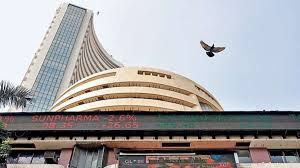When the Barrel Emptied: November's Dip and the Reliance-Rosneft Revival
- The JSBF Report

- Oct 22
- 3 min read

Source: The Morning Context
India and Russia, forging the largest energy partnership ever in their history, secured a landmark deal between Reliance Industries and Rosneft in a 10-year contract, valued at $13 billion, saving annually, in December 2024. This opportunity presented a significant breakthrough in the ongoing Russia-Ukraine conflict. In November 2024, the global crude oil markets went through significant volatility, leading to a price decline for Brent crude ($74.47 per barrel from $83.18 the previous year), which represented an 11% decline in the price level compared to the preceding year's price level. This market capitulation was driven by various interconnected factors, such as: (1) The demand contraction in China, where the crude oil consumption fell by 270,000 barrels per day year over year due to structural shifts consisting of aggressive renewable energy development, adoption of electric vehicles, and a prolonged real estate downturn. (2) The two-year highs of the strengthening U.S. dollar made commodities expensive for international buyers, also raising concerns over Federal Reserve policy tightening and global economic growth; these factors led to a significant decline in oil prices. (3) Even in the presence of OPEC+ Production cuts during this period, there was a reported excess surplus of One Million barrels per day as per the International Energy Agency forecast, blamed on resilient U.S. shale production and continuation of the crude exports from Libya.
Before the war with Ukraine, Russian crude oil was mainly directed towards Europe. With increasing sanctions from Western nations, Russia had to look beyond its traditional customers. This was when the Russian Federation decided to diversify its customer base and include more Asian countries, specifically India and China. Historically, India has consistently imported Russian crude oil at spot prices, while traditionally, deals were signed with Middle East suppliers, such as the UAE and Saudi Arabia. This strategic emphasis on the eastern markets has allowed Russia to strengthen its export revenues while circumventing the sanctions imposed by the West.
Under this 10-year contract, Reliance secures 500,000 barrels per day of Russian crude for India’s energy needs, which represents 0.5% of the global oil supply and half of Rosneft’s overseas exports from the Russian ports. Rosneft agreed to deliver 20-21 Aframax-sized Cargoes of various Russian crude grades monthly and three additional fuel cargoes to Reliance’s world's largest refining complex in Jamnagar, India, and the pricing mechanism of the said trade is based on differentials to the average Dubai price, ensuring the rate competitiveness. This deal emerges as a major opportunity for India to procure its energy security for the 1.4 billion population. With the import dependency reaching 89.1% of crude oil requirements, the Indian subcontinent has strategically diversified its supply sources. With an over-period hike from 0.2% before the Russia-Ukraine conflict to 35-40% of India’s crude imports are now accounted from the Russian federation. This shift has generated substantial cost savings valued at $13 billion for India, over FY2023-2024.
As India’s energy diplomacy evolves significantly, taking geopolitical considerations hand in hand with economic pragmatism, the sub-continent reported a 19.1 million metric tonnes of crude oil paying $10 million till November 2024 - a 27% decline in the import costs compared to the preceding year.
“According to the Ministry of Petroleum & Natural Gas (via PPAC), India ranks as the 4th largest refining country in the world in terms of installed capacity, at over 256 MMTPA as of early 2025.”. This deal cushions India from volatile global oil market shocks.
When the barrel emptied, India filled the gap—not just with oil, but with strategy. The Reliance–Rosneft deal stands as a reminder that even in volatility lies opportunity. As markets fluctuate and alliances evolve, India’s ability to navigate between economics and diplomacy will define its next decade of growth. What began as a response to sanctions and shortages might well emerge as the foundation of a more secure and self-assured energy future.




Comments